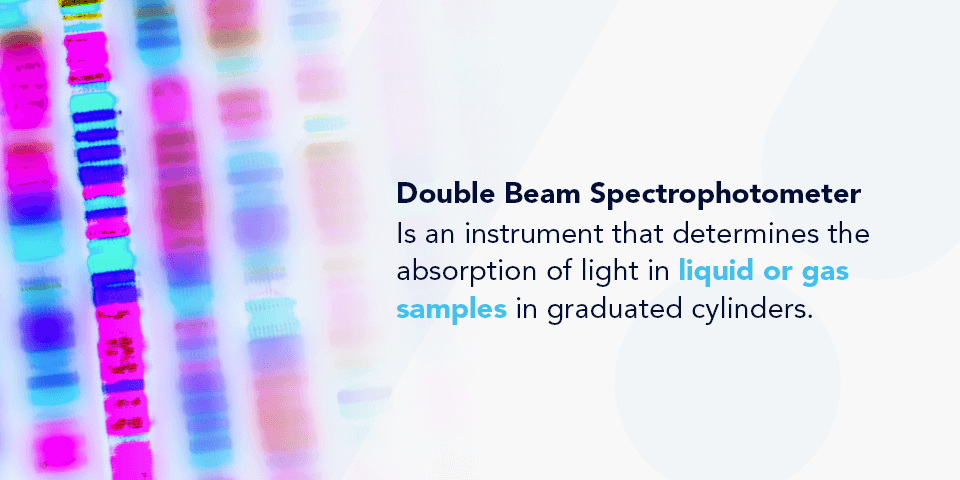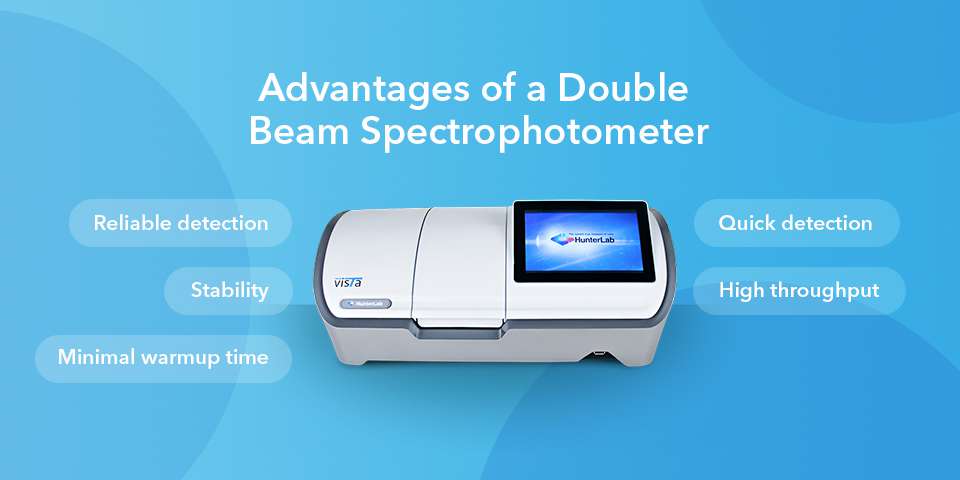
Spectrophotometers measure light through wavelength distribution, and scientists use these instruments to measure different types of light, including visible and near-ultraviolet. Scientists wanted to obtain these measurements at a higher speed and resolution, and the double beam spectrophotometer meets this need.
Understanding Double Beam Spectrophotometers

A double beam spectrophotometer is an instrument that determines the absorption of light in liquid or gas samples in graduated cylinders. Its components are:
- Monochromator
- Detector
- Light source
- Interpreter
- Sample holder
This instrument is called a “double beam” spectrophotometer because it uses two beams of light:
- Reference beam: This beam passes through the reference standard to monitor the lamp energy.
- Sample beam: This beam passes through the sample to reflect sample absorption.
Double beam spectrophotometer diagrams show how the mechanical chopper divides the energy from the light source using a half mirror, so one beam goes to the reference side, and the other beam goes to the sample side. This format allows the reference and the sample to be read simultaneously for a real-time reference. The double beam spectrophotometer uses an infrared thermometer and photometers to measure absorbance versus wavelength to detect the color of the sample. The absorbance measurement is the ratio of the sample to the reference beams.
Modern spectrophotometers use a broad spectrum of electromagnetic wavelengths in their reflection and transmission processes. This includes visible and near-ultraviolet rays, as well as infrared and microwave rays.
Light intensity is crucial to the spectrophotometer’s function, which explains why the device’s lamp must be reliable and capable of emitting strong beams. These light beams may differ depending on the type of wavelength being measured. This ultimately helps scientists determine how a sample interacts with light across varying wavelengths.
Advantages of a Double Beam Spectrophotometer




